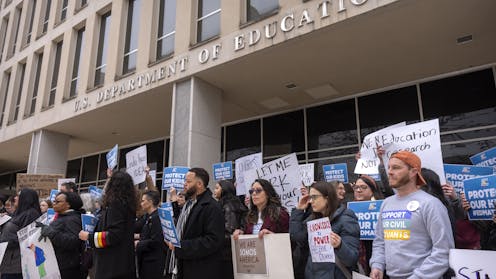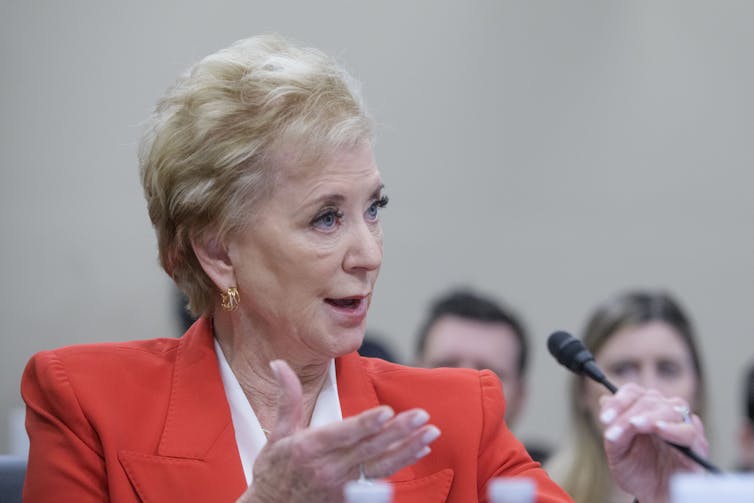Source: The Conversation – France – By Diana Pérez-Arechaederra, Associate Professor of Organizational Psychology, ESCP Business School
In the 2000s, when I worked as a psychologist in long-term elderly care and primary healthcare services, many of the patients I saw were living with chronic or complex conditions. These situations required that patients trust care providers, consistently adhere to treatments and, often, receive care over an extended period of time.
But what stood out to me were the differences in how those protocols were applied. Some practitioners took time to explain something clearly, asked questions that showed genuine care, or invited patients into a conversation about their treatment. I also noticed how differently patients responded when none of that happened.
The quality of communication – the level of respect, attention and clarity – often made the difference between patients’ cooperation and resistance, between their motivation and withdrawal.
These observations led me to systematically investigate the psychological processes involved in how patients perceive fairness in healthcare.
What I found, in collaboration with colleagues, is that this “soft” dimension of care – how people perceive their treatment, how information is shared with them, and how much time and space they are given to take part in the process – has very real effects on behaviour. Patients’ perception of respect – what we call interactional fairness – often hinges on whether they are given the chance to ask questions, make sense of information, weigh different options and even participate in making decisions. For patients to follow a practitioner’s recommendations, they need to feel informed, heard, respected and involved – not just treated.
What fairness looks like in practice
In our study, we examined two forms of what psychologists call organizational justice in healthcare settings:
-
Interactional justice – the sense of being treated with dignity, attentiveness and respect
-
Informational justice – the perception that shared information is clear, complete, timely and relevant
We surveyed over 850 patients in Spain and the United States who had visited a healthcare provider in the previous six months. We asked them how they experienced their interactions with health professionals, how much they trusted those professionals, how satisfied they were with the service, whether they followed medical advice, and whether they intended to return to the same provider.
What we saw was a clear pattern. Patients who perceived fairness – being treated with respect and given clear and appropriate information – were more likely to trust their healthcare provider. That trust, in turn, shaped whether they felt able to engage with treatment and sustain their relationship with (or, in the language of our study, their “loyalty” to) the healthcare service or physician. What we call informational fairness had a particularly strong direct link to adherence to treatments or clinical advice, showing its importance for understanding patient behaviour.
In healthcare, patients are navigating uncertainty, vulnerability, and long-term relationships with systems and providers. Their ability to understand, participate in and trust that process is integral to care.

A weekly e-mail in English featuring expertise from scholars and researchers. It provides an introduction to the diversity of research coming out of the continent and considers some of the key issues facing European countries. Get the newsletter!
Insights across borders
Despite the structural and institutional differences between Spain, with its predominantly public healthcare system, and the United States, where healthcare is largely organised through the private sector, our goal was to identify common patterns in how patients interpret and engage with services. Specifically, we sought to understand whether similar cognitive and emotional processes create the patient experience, regardless of the broader healthcare system in place.
Using path analysis models, we assessed the relationships between patients’ perceptions of fairness and their resulting levels of trust and satisfaction, and then, the relationship between those perceptions and patients’ adherence and loyalty to the service. While patients in the United States exhibited slightly stronger associations between perceived fairness and both trust and satisfaction, the overall nature of the relationships was highly consistent across both countries.
These findings suggest that despite differences in how care is delivered and financed, patients in both countries respond to their healthcare interactions in fundamentally similar ways. This matters for healthcare providers and policymakers across diverse settings who are aiming to enhance patient-centred care.
Recognizing patients as agents
At the heart of this is an ethical question: Are patients treated as agents in their own care, or simply as objects of intervention?
Medicine is not a closed, flawless system. It is a developing field of research being translated into practice, and its shortcomings are shaped by social and structural biases, and by the fact that patients may not be given all of the options they should receive. In areas such as women’s health, chronic pain, mental health and rare diseases, patients often offer insights that clinical protocols miss. When their lived experience is ignored or dismissed, we lose opportunities for better diagnoses, more responsive and efficient care, and more sustainable treatment plans.
À lire aussi :
Doctors need to talk through treatment options better for black men with prostate cancer
When I was working in elderly care, I remember the testimony of a resident who was very upset because his parenteral treatment (an injection) had been changed to an enteral one (a drink). Nobody informed him about the change. When I asked him why he was so unhappy, he said: “I much preferred the injections because the clinician who came to administer them was very nice to me. We were friends. Now, I’ll never see her again.”
I’m not sure whether continuing with the parenteral administration was even possible, but what was certain is that nobody asked him what he preferred. And that had an impact on him.
Listening to patients is not merely being polite: it is recognizing that they have information that professionals lack. And that the ethical foundation of health care depends not only on what medical professionals do to patients, but on how they work with them.
What can be done
Creating fairer care involves the following concrete practices, which come from our findings:
-
Designing information systems that support timely, accessible and patient-centred communication
-
Designing procedures and allocating enough time for professionals to conduct themselves in accordance with interactional and informational fairness principles
-
Training for professionals in relational and communication skills that foster patients’ perceptions of respect and dignity
-
Educating patients about what care can reasonably provide to help set appropriate expectations
-
Reframing patient participation so that patients are not just surveyed after the fact, but listened to and given agency throughout the care process
À lire aussi :
Power to the patient: Person-centred care and how you can take your health into your own hands
None of this is separate from clinical quality. On the contrary, it is what allows clinical care to work best and for all. When patients feel that they matter – that they are respected and informed – they are more likely to collaborate, follow through and return for more care if they need it. That would benefit patients, their practitioners, healthcare systems and society.
![]()
The scientific article referred to in this piece was funded by the Spanish Ministry of Science and Innovation and the Instituto de Salud Carlos III (ISCIII), whose projects, RD24/0005/0018, were co-funded by the European Union and the Facility for Recovery and Resilience (MRR). The Network for Research on Chronicity, Primary Care and Health Promotion (RICAPPS) was involved in the development of RD24/0005/0018. Projects PI22/01677 and PI20/00321 were co-financed by the European Union. The government of Castilla y León also collaborated in the funding of this study through research projects BioSan 2009 and BioSan 2011. These funders played no role in the study design, data analysis, results reporting or the decision to submit the manuscript for publication.
– ref. Patients who feel heard are more likely to stick with medical treatment – https://theconversation.com/patients-who-feel-heard-are-more-likely-to-stick-with-medical-treatment-260750


















